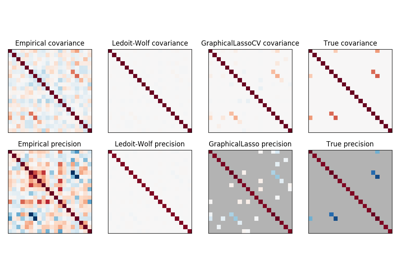sklearn.datasets.make_sparse_spd_matrix¶
-
sklearn.datasets.make_sparse_spd_matrix(dim=1, alpha=0.95, norm_diag=False, smallest_coef=0.1, largest_coef=0.9, random_state=None)[source]¶ Generate a sparse symmetric definite positive matrix.
Read more in the User Guide.
Parameters: - dim : integer, optional (default=1)
The size of the random matrix to generate.
- alpha : float between 0 and 1, optional (default=0.95)
The probability that a coefficient is zero (see notes). Larger values enforce more sparsity.
- norm_diag : boolean, optional (default=False)
Whether to normalize the output matrix to make the leading diagonal elements all 1
- smallest_coef : float between 0 and 1, optional (default=0.1)
The value of the smallest coefficient.
- largest_coef : float between 0 and 1, optional (default=0.9)
The value of the largest coefficient.
- random_state : int, RandomState instance or None (default)
Determines random number generation for dataset creation. Pass an int for reproducible output across multiple function calls. See Glossary.
Returns: - prec : sparse matrix of shape (dim, dim)
The generated matrix.
See also
Notes
The sparsity is actually imposed on the cholesky factor of the matrix. Thus alpha does not translate directly into the filling fraction of the matrix itself.


